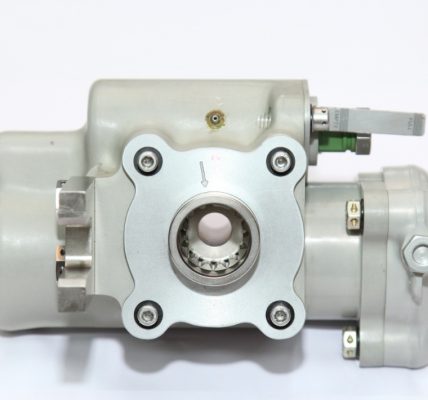More documents carry as much weight in employment and finance as a paystub. Paystubs are crucial in the wage verification process, often overlooked as just another piece of paperwork. They provide a detailed breakdown of an individual’s earnings, deductions, and taxes withheld, offering a snapshot of their financial standing. With the advent of technology, paystub generator have made the creation of these documents more accessible and efficient than ever before.
Understanding Paystubs:
A paystub, a payslip, or earnings statement is a document employers issue to employees detailing their earnings for a specific pay period. It typically includes information such as:
- Gross Pay: The total amount earned before deductions.
- Deductions: Including taxes, insurance premiums, retirement contributions, and other withholdings.
- Net Pay: The amount remaining after deductions, also known as take-home pay.
- Pay Period: The timeframe for which the payment is made, such as weekly, bi-weekly, or monthly.
- Year-to-Date (YTD) Earnings: Summarize the total earnings and deductions from the beginning of the calendar year to the current pay period.
The Importance of Paystubs in Wage Verification:
Paystubs play a pivotal role in various aspects of financial management and verification, both for employees and employers:
Income Verification:
-
- Individuals must often provide proof of income when applying for loans, mortgages, or rental agreements. Paystubs are official documentation of one’s earnings, providing lenders or landlords with the necessary information to assess an individual’s financial capacity.
- Lenders use paystubs to calculate an applicant’s debt-to-income ratio, a critical factor in determining loan eligibility and interest rates. Accurate income verification prevents fraudulent loan applications and ensures responsible lending practices.
Tax Compliance:
-
- Paystubs provide employees with a detailed breakdown of their tax withholdings, facilitating accurate income tax filing. They serve as a reference point for employees to ensure that their taxes are being withheld correctly throughout the year.
- Employers also rely on paystubs to reconcile payroll records and accurately report employee earnings to tax authorities. Compliance with tax regulations is essential to avoid penalties and maintain the integrity of payroll operations.
Employee Rights and Disputes:
-
- Paystubs in wage disputes or discrepancies serve as evidence of the agreed-upon wages and deductions. Employees can use pay stubs to verify that they have been compensated correctly for their work and to address any issues with their employer.
- Paystubs also help to ensure transparency in employment arrangements, empowering employees to understand how their wages are calculated and what deductions are being made.
The Evolution of Paystub Generators:
The traditional process of generating paystubs involved manual calculations and paperwork, often prone to errors and inefficiencies. However, with the rise of digitalization, paystub generator have transformed the way paystubs are created and distributed:
Automation and Efficiency:
-
- Paystub generators leverage automation technology to streamline the process of creating paystubs. Employers can input relevant payroll information, and the generator will generate a customized paystub based on the provided data.
- This automation reduces the time and resources required to create paystubs, freeing up valuable administrative resources to focus on other HR and payroll management aspects.
Customization and Flexibility:
-
- Paystub generators offer flexible formatting options and customization features, allowing employers to tailor paystubs to their needs and branding requirements.
- Employees benefit from personalized paystubs that reflect their earnings and deductions, enhancing transparency and comprehension.
Security and Compliance:
-
- Digital paystub generators prioritize data security and compliance with privacy regulations. They employ encryption and secure storage measures to safeguard sensitive payroll information.
- Additionally, paystub generators help ensure compliance with legal requirements regarding providing pay documentation to employees.
Best Practices for Utilizing Paystubs:
To maximize the benefits of paystubs in the wage verification process, both employers and employees should adhere to best practices:
Regular Review:
-
- Employees should regularly review their paystubs to ensure accuracy and promptly address discrepancies. Pay attention to changes in earnings, deductions, or taxes withheld.
- Employers should regularly audit payroll records to identify and rectify any errors or inconsistencies in paystubs.
Secure Storage:
-
- Employees should safely store their paystubs for future reference, especially when applying for loans, filing taxes, or resolving disputes.
- Employers should maintain secure digital records of paystubs in compliance with record-keeping requirements and data protection laws.
Communication and Transparency:
-
- Employers should communicate openly with employees regarding their pay structure, including wage changes or deductions.
- Employees should feel empowered to raise concerns or seek clarification regarding their paystubs if they encounter discrepancies or uncertainties.
Conclusion:
In conclusion, paystubs are vital in the wage verification process, providing employees with a detailed record of their earnings and deductions. With the advent of paystub generators, the creation and distribution of paystubs have become more efficient and accessible, benefiting employers and employees. By understanding the importance of paystubs and adhering to best practices, individuals can ensure accurate income verification, tax compliance, and transparency in their financial transactions.























